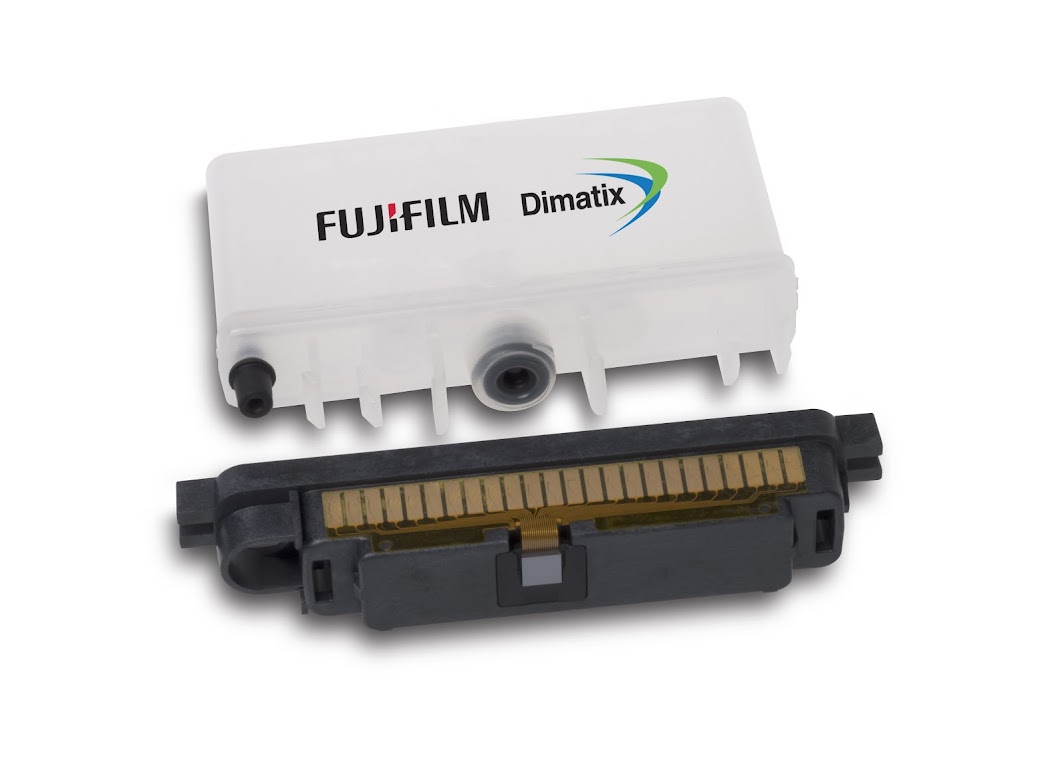Four Ways That All Inkjet Developers Can Benefit From Using Dimatix DMC Cartridges
Last Updated on 6月 25, 2024 by ImageXpert Team
Fujifilm Dimatix has recently released an updated version of their DMC cartridge – a low-cost, disposable version of their popular Samba G3L printhead. The Dimatix DMP platform has been popular amongst universities, start-ups, and inkjet developers for years as an inkjet prototyping system. The original DMP and DMC cartridges were designed to mimic early Dimatix printheads like the Sapphire and S-Class. The next-generation of cartridges has 12 nozzles at 75dpi, manufactured using the same MEMS technology as the Samba printheads, and can produce 2.4pL drops. Whether you are new to inkjet or a seasoned developer, the unique design of these cartridges can make them a useful addition to your inkjet lab.

Saving Expensive Printheads
Industrial inkjet printheads range in price from $1000 – $8000 apiece, so ink formulation mistakes that damage the heads can be costly. Applications with large particles, harsh chemistries, or other challenging fluids can easily clog or scratch the nozzles of the printhead and cause irreversible damage. Dimatix DMC cartridges are a disposable alternative to more expensive printheads, making them a low-risk choice for early-stage ink testing where damaging the printhead is likely.
A Dimatix DMC printhead (left) and a Dimatix Samba G3L printhead (right) with the same ink and waveform. Pretty similar results, without the fear of expensive printhead damage.
Saving Expensive Ink
Certain inkjet applications, like biomedical or electronics, use inks that are incredibly expensive. The process of filling an ink supply and purging the printhead can use thousands of dollars worth of ink before a single drop is fired, significantly increasing the cost of inkjet R&D. The Dimatix DMC cartridge has a completely different design, with a small 1.5mL bladder that can be filled with a syringe and requires no purging or wasted fluid to set up. These developers are able to perform jetting analysis and feasibility using a fraction of the ink and at a fraction of the cost compared to testing on industrial printheads. Thanks to the cost savings, some of our customers develop their expensive inkjet inks on DMC cartridges, even if they aren’t using Dimatix printheads in production.
メーリングリストに登録
Frequently Changing Inks
Changing from one fluid to the next is a very time-consuming part of inkjet development. The entire ink supply and printhead assembly needs to be thoroughly flushed to remove the old fluid, and then thoroughly filled again with the new one, in a process that can take many minutes or even hours each time. Syringe-based ink testing is a popular solution, but an even faster solution is with Dimatix DMC cartridges. Filling a cartridge takes only a few seconds, so you can go from testing one fluid to another without any flushing in between. The cartridges can even be swapped back and forth, so it is easy to test multiple inks simultaneously. If you want to quickly compare a variety of inks, there is no faster way than with a handful of DMC cartridges.
Inkjet Proof of Concept
Professional-grade inkjet equipment is costly and complicated to set up. A high level of technical know-how is required to get an ink supply, drive electronics, and printhead all working together in sync, and this learning curve has to be overcome before you can even start developing anything proprietary. The Dimatix DMC kit is extremely beginner-friendly; there are only a few parts, the software is easy to use, and it is difficult to mess up. This has made it very popular in universities where new students have to learn the equipment every semester, but it is also a great place to start for companies with an inkjet fluid concept that they want to test.

The software is simple to use and contains everything from nozzle selection to waveform controls
Interested in Learning More?
If you are currently a Dimatix DMC user and want to learn how to integrate it with a JetXpert Dropwatcher, or you are considering getting started with Dimatix DMC cartridges, ImageXpert can help!



